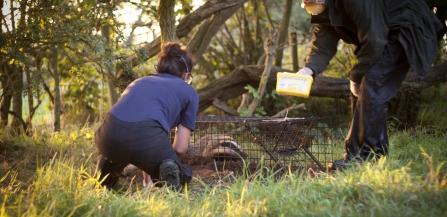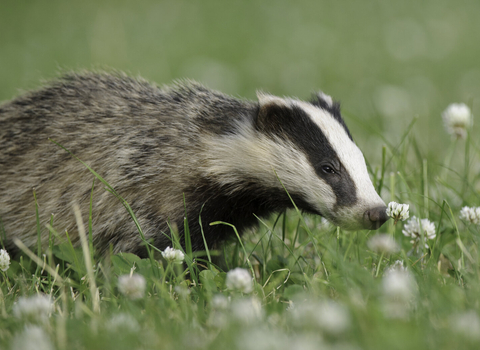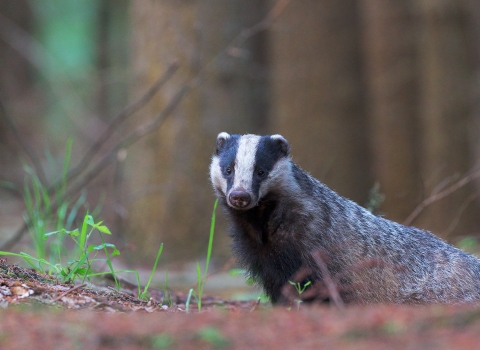What is bovine tuberculosis?
Bovine tuberculosis (bTB) is a highly infectious disease of cattle which devastates thousands of farming businesses annually. Since the mid-1980s, the incidence of bovine tuberculosis in cattle has increased substantially creating an economic burden on the taxpayer and the farming industry, as infected cattle must be culled.
UK Government research shows that bTB is not a major cause of death in badgers. Generally, infected badgers do not show any sign of infection and can survive for many years before suffering from severe emaciation.
What does Staffordshire Wildlife Trust believe?
The Wildlife Trusts, including Staffordshire Wildlife Trust, have opposed the badger cull since it started and believe that it is an ineffective tool in the fight against bTB.
We are very conscious of the hardship that bTB causes in the farming community and the need to find the right mechanisms to control the disease. We believe that a badger cull is not the answer and instead we want to see cattle and badgers being vaccinated.
The scientific evidence demonstrates that culling is likely to be ineffective in fighting the disease and, worse still, risks making the problem even worse. We believe the emphasis of all our efforts should be to find a long-term solution and we call for the UK Government to implement its manifesto commitment to end the culling of badgers.
This is a cattle problem, not a badger problem
Evidence shows that badgers are not the primary cause of the spread of tuberculosis in cattle and that the primary route of infection is from cow-to-cow contact – so a vaccine for cattle should be a government priority.
Since 2011, Wildlife Trusts have been involved in vaccinating badgers on our nature reserves and in the wider countryside in partnership with vets, farmers and landowners.
The cull is scientifically unsound
Robust evidence is still lacking to demonstrate that badger culling is worth the loss of thousands of badgers and millions of pounds of public spending. To justify the badger cull and to try and show that badger culling is having a significant impact on lowering bovine TB in cattle, the previous UK Government regularly used the Downs et al (2019) paper and more recently, the Birch et al (2024) paper. Both papers however noted that they didn't or couldn't take acccount of confounding factors.
The latter paper described one of these confounding factors, noting that the study farms involved in the Badger Control Policy were required to implement reasonable biosecurity measures. It went on to conclude that whilst it found a reduction in bovine TB on the study farms, the "vaccination of badgers, fertility control and on farm biosecurity may also achieve this effect".
What Staffordshire Wildlife Trust is doing
Badger vaccination: Staffordshire Wildlife Trust continues to vaccinate badgers on two of its nature reserves.
Lobbying the Government and MPs: The Wildlife Trusts have been campaigning both nationally and at a local level, and lobbying the European Commission to change regulation relating to cattle vaccination.
Encouraging our members to take action: We have encouraged members to campaign and write to their MPs to halt the cull and invest in cattle and badger vaccination instead.
Want to understand more?
Read more about what The Wildlife Trusts believe to be the solution to tackling bovine tuberculosis, as well as recent blogs and press releases on the issue below:

Image: Andrew Parkinson 2020Vision
What you can do
- Donate to our badger vaccination programme
-
Become a member of Staffordshire Wildlife Trust and support us with our campaign and vaccination work to help protect badgers

WildNet - Andrew Mason
Keep up to date with the cull
Click the link to sign-up to Staffordshire Wildlife Trust's enewsletter and get the latest news straight to your inbox.

